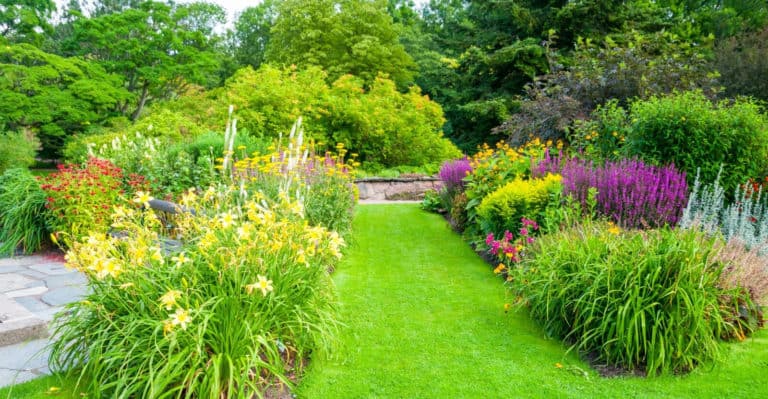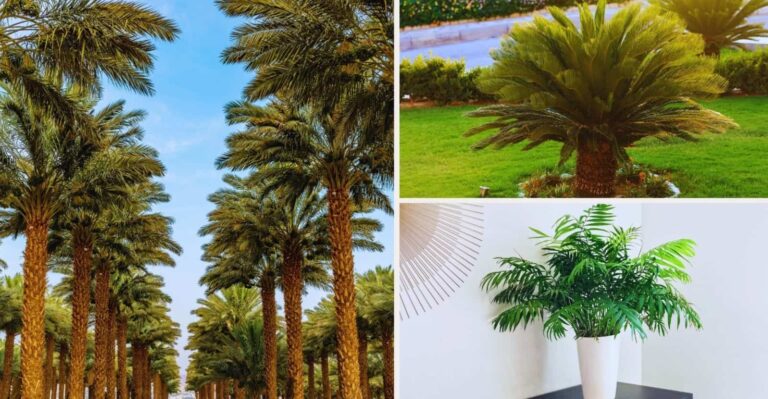Amazon has put together some great Home Gift Deals – save money and get your shopping done at the comfort of your home! Click here to see deals on Amazon
If you’re a homeowner, you probably know that yard work is no walk in the park. Sometimes, it’s hard to tell the difference between grass and weeds, making it challenging to maintain your yard.
But it doesn’t have to be so complicated to identify weeds that look like grass. There are ways for you to tell the difference between these two plants, making it much simpler to do your yard work.
Read it further to know the nine most common garden weeds that often confuse gardeners with grass.
How can you tell the difference between grass and weeds?
Most people aren’t experts on grassy weeds, so identifying them is understandably complex. However, there are a few ways to tell the difference between grass and weeds. Most weeds are taller than grasses, have more leaves, and grow in different patterns.
For example, dandelions grow in a circular pattern while clover grows square. Weeds are usually invasive plants that grow in patches, while the grass grows in long clumps.
If you’re still not sure if you have weed or grass, then take a closer look at the roots. The weed roots are mostly buried deep under the ground, making them hard to remove. They survive the hostile growing conditions.
The grass roots are primarily visible above the surface, and they go only a few inches deep in the soil. This makes it easy to pull out grass from the ground while weeds will have roots buried in the soil.
The weeds seldom have the same color on both sides of the blade, while grass blades are more uniform on both sides. The weed texture is usually smooth to touch, while most grasses have a rough surface and sharp blade leaves.
Also, weeds typically only grow flowers during the spring, while most grasses produce small flowers year-round.
What are the weeds that look like grass?
Those interested in landscaping and home decorating will be surprised by some of the most common weed plants that look like grass. Here is the most common list of weeds that often look like grass.
1. Common Couch (Elymus Repens)
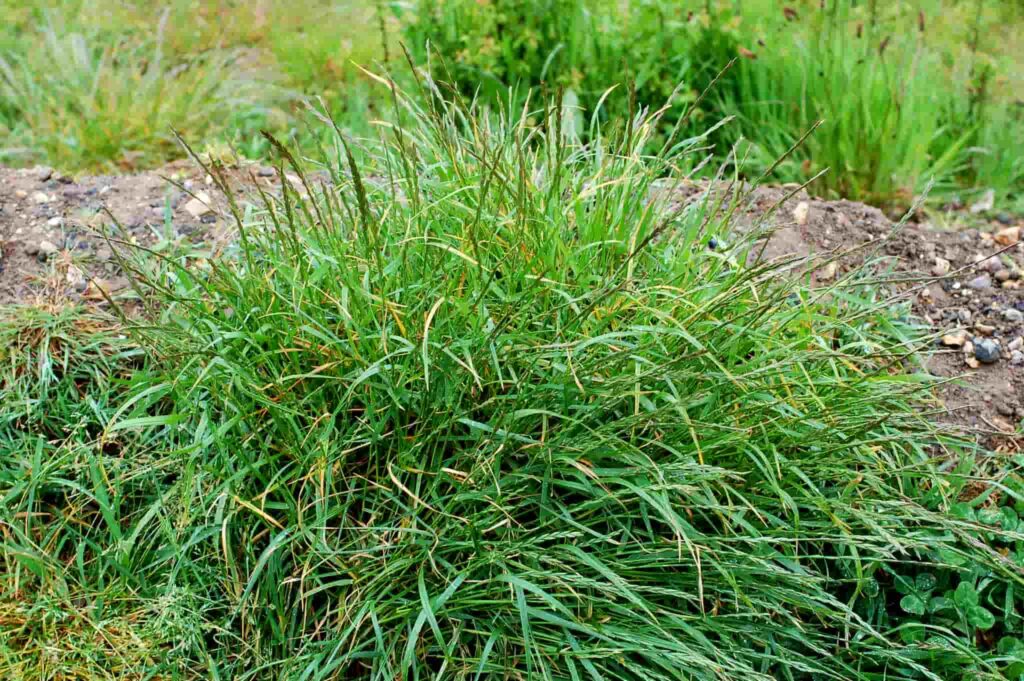
This is a perennial weed in wheat fields and other crops. It can grow up to 2 feet tall, has narrow leaves, and produce small yellow flowers in late spring.
It’s an aggressive grower and forms a dense mat-like layer in the yard, making some inexperienced homeowners consider it grass. The common couch seeds are dispersed by wind, and the plant dies after flowering.
The flat and smooth hairless leaves thrive in summer, where they can get full sunlight. It tends to spread and take over the entire lawn, which can be a big problem for the homeowner.
2. Blue Fescue (Festuca glauca)
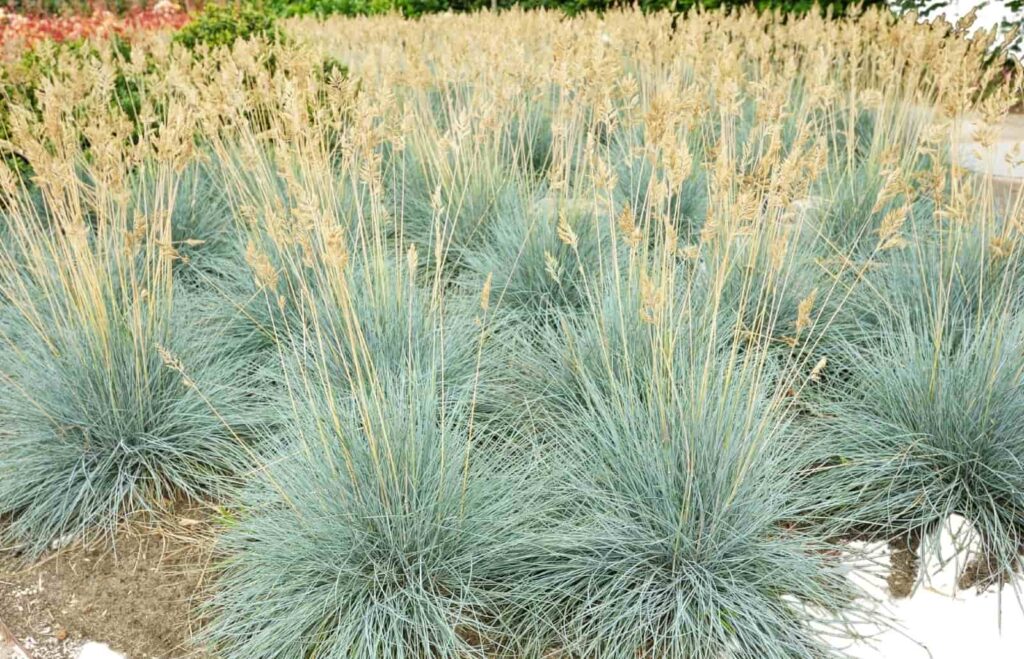
Blue fescue is a showy grass weed with light blue tint foliage and blooms yellow flowers. It has a fine texture that looks like grass when growing. But it can grow fast and reach up to 12 inches high.
Several varieties of blue fescue can quickly take over the grass lawn and other smaller plants, which makes it classify it as a weed. It has needle-like leaves that grow in a cluster. It blooms green to yellow flowers in summer and often grows best in well-drained moist soil.
3. Broomsedge (Andropogon virginicus)

This is an invasive weed that was brought over from Europe by settlers. It has a thick base and long leaves, making it look like a large coarse grass broom. The weed flowers in July and produces brownish-black seed pods.
Broomsedge is easy to identify via its unique flattened leaves. The leaves have hairy spikelets on both sides. You can feel it on these grass-like weed blades with your fingers. The stem of Broomsedgde turns reddish-brown as they age, making it easy to differentiate from the ordinary lawn grass.
4. Crabgrass (Digitaria sanguinalis)
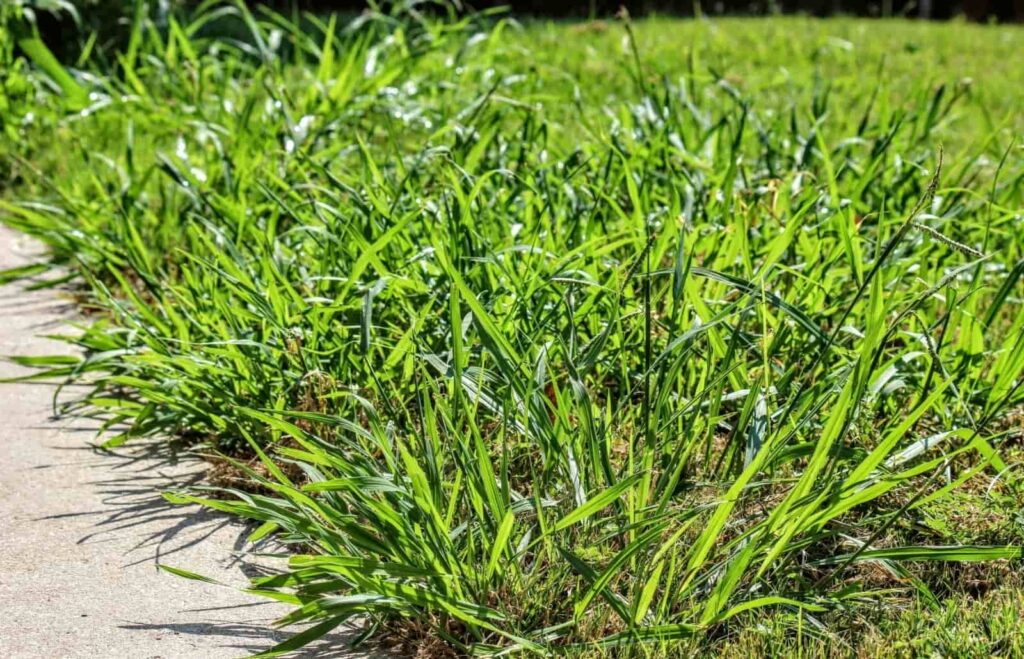
Crabgrass is a perennial grass that grows in long stems and small leaves clumps. It can grow up to four inches tall with a solid green-colored stem. You can often find it growing in the grassy areas and uncultivated lands.
You can differentiate it from regular grass by noticing the way it grows. Crabgrass has wide, flat-leaf blades that are stiff and close together. The stems of the plant are delicate and smooth. It grows low to the ground, producing a long cluster of flowers.
There are some smaller varieties of crabgrass that grow shorter than five inches long. The leaf blades of this weed grass taper to a point and the stem bed at the nodes. It’s a hardy weed and fast grower that spreads aggressively through its rhizomes and airborne seeds.
5. Carpet Grass (Axonopus compressus)

This weed is often found growing in lawns, fields, and around homes and gardens. If you look closely, you can see the triangular crinkly green leaves. The grass grows flat to the ground with shiny and waxy leaves.
It’s a perennial weed those spreads by creeping along the ground and by seeds that turn into new plants. The carpet grassroots and shallow-rooted with branched stolons.
The leaves of Carpet grass are broad and dense. These leaves are divided into clusters of three or more. The blooming starts in late summer that is pollinated by wind. It’s native of America but not very drought tolerant.
6. Purple Nutsedge (Cyperus Esculentus)

Nutsedge typically looks like rye and is often mistaken for it. It spreads out that look like grass. It’s often hard to spot on the lawn and becomes a significant weed problem for homeowners and landscapers.
Nutsedge has a triangular stem that is slightly sharper at the edges. It produces spiky clustered flowers and has very distinct “V” shape leaves. It’s an aggressive grower, and the rhizomes spread farther and deeper in the soil, making it difficult to remove.
For most lawns, their stem looks like tall grass. They usually have three leaves at the end and have different colors for their flowers.
The nutlets in the roots are characteristic of nutsedge. If you see these, there is inevitably nutsedge. To control it growing in your lawn, apply post-emergent herbicides such as mesotrione.
7. Goosegrass (Eleusine indica)
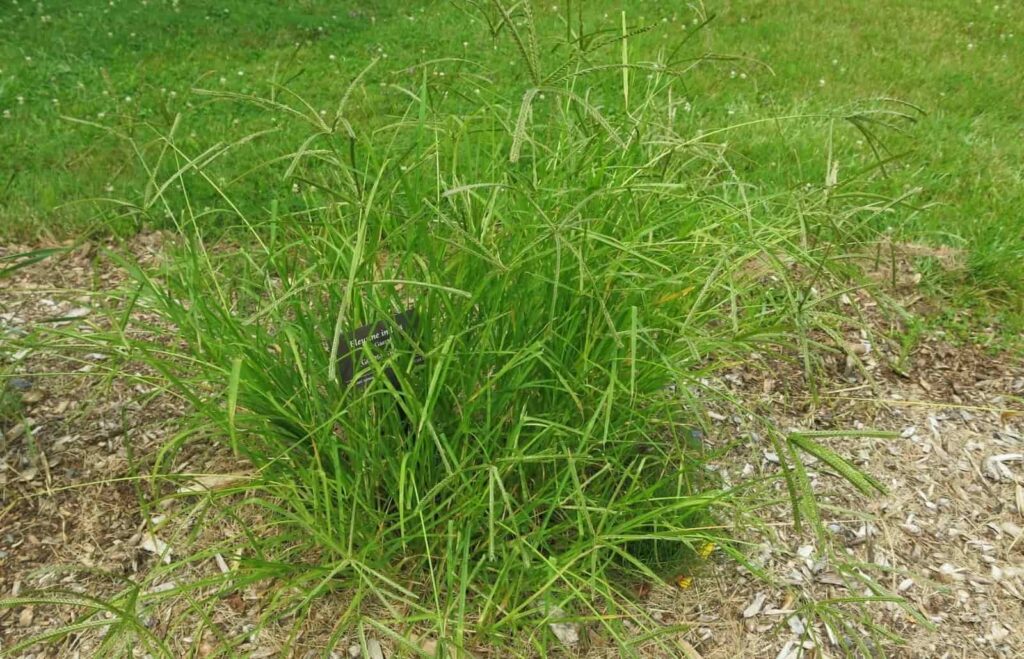
Goosegrass is also known as Indian Balsam weed, a perennial weed native to eastern North America. It has spread worldwide due to its ornamental appeal as a ground cover and landscaping project.
It grows aggressively in clumps through its fibrous root system. The flattened leaves are white or silver-colored with folded shape and smooth to touch. The strands of weed spread like a goose’s feet that can grow up to 15 inches tall.
8. Johnsongrass (Sorghum halepense)
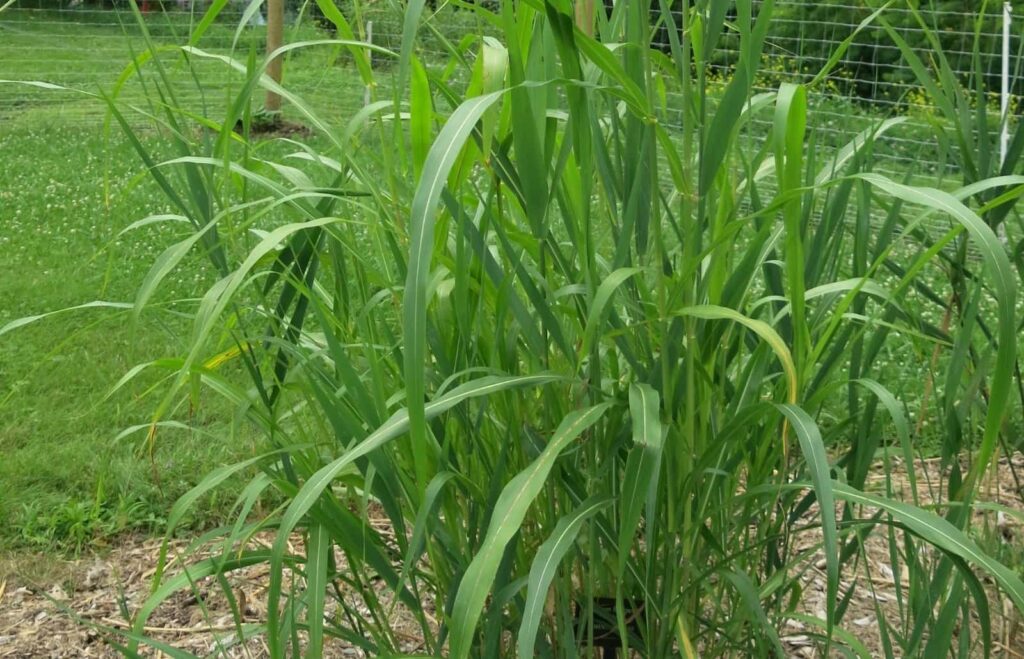
This is a tropical weed plant that looks like a bunch of green grass. One of the distinguishing features of this weedy grass is its evergreen leaves. They grow fast, spreading all over the lawn.
These common weeds leaves are about 2 feet long, with alternative arrangements on a spiky stem. This perennial weed grows purple flower head tufts from May to the first frost. The leaves can spread up to 1 inch wide, with white veins running in the middle.
The natural features of upside branching stem and white midribs make them easy to identify. It invades aggressively and forms dense colonies that supplant native vegetation, restricting tree seedlings. To control its growth, apply broadleaf herbicide in spring.
9. Creeping bentgrass (Agrostis palustris)

You can find these perennial lawn weeds in all but the driest of places. It has bright green color and leaves forming a crescent shape around the plant, making it hard to spot.
You can identify it by looking at its leaf closely. The leaf blade is wider at the stem base (near the leaf) than at the tip.
It has a shallow root system with a horizontal growth pattern, unlike other weed grass. Since it’s a cool-season grass, it turns brown in a hot summer. In addition to growing in a garden, it’s also commonly found growing in parks and athletic fields.
How to get rid of garden weeds that look like grass?
There are several ways to get rid of weeds in the lawn. For most gardeners, the use of pre-emergent herbicide, a weed puller, a chisel, or a garden shears effectively gets rid of these weeds.
The best way to keep weeds at bay is by not allowing them to get hold in your garden. And if they do pop up, there are some easy ways to get rid of those pesky weeds to keep the lawn lush and healthy.
Here are some strategies to control annual weeds such as green foxtail, yellow nutsedge, or poa annua growing on a lawn.
- Use selective herbicide that contains 2, 4D as an active ingredient
- Remove weeds with a weed puller
- Use a flame thrower to burn weed’s entire plant
- Apply organic weed killer such as vinegar
- Pour boiling salt water over the weeds directly
- Regularly mow your lawn weeds to prevent it from producing seed
Conclusion
In conclusion, weeds seem to get a lot of attention, but they’re just a nuisance. It’s important to know what weeds are common in your area so you can recognize them.
If you happen to have any unwanted weed growth on your property, it’s best to maintain it by pulling or mowing before it spreads.
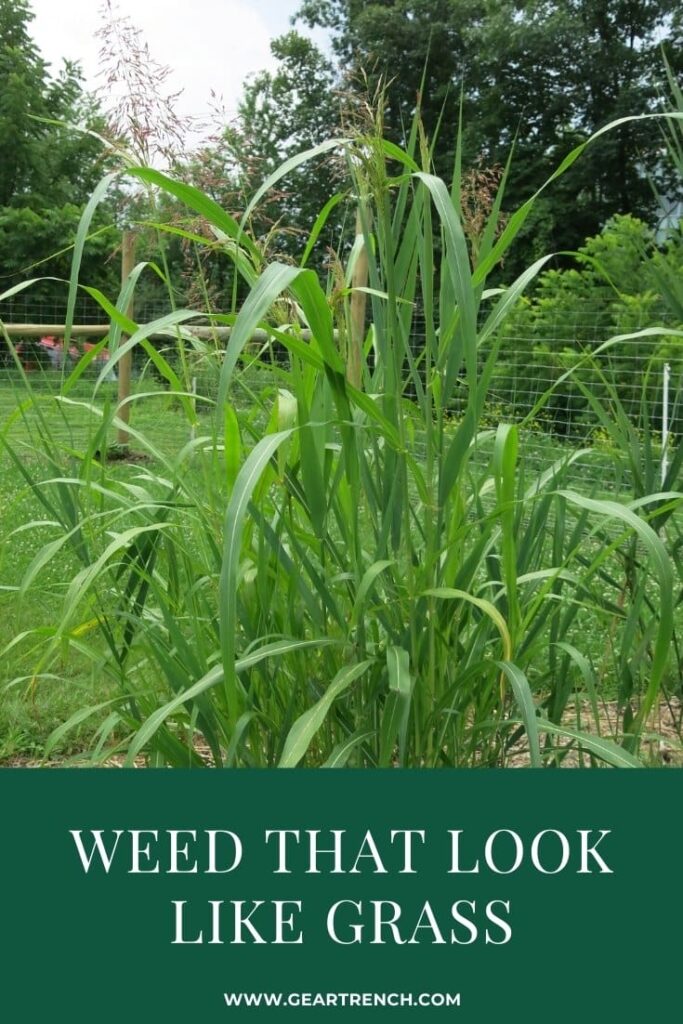
Don’t forget to share this post



